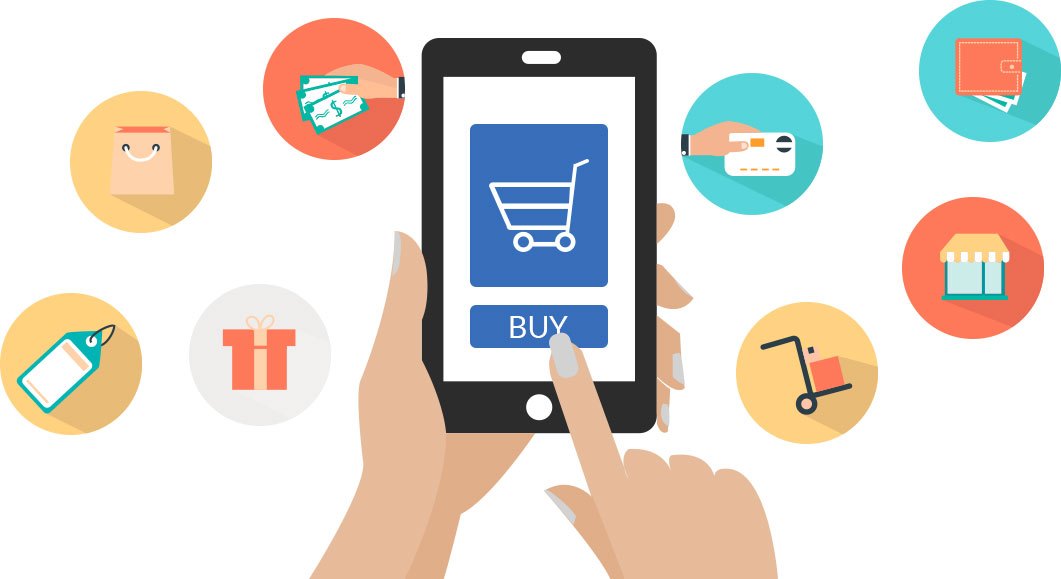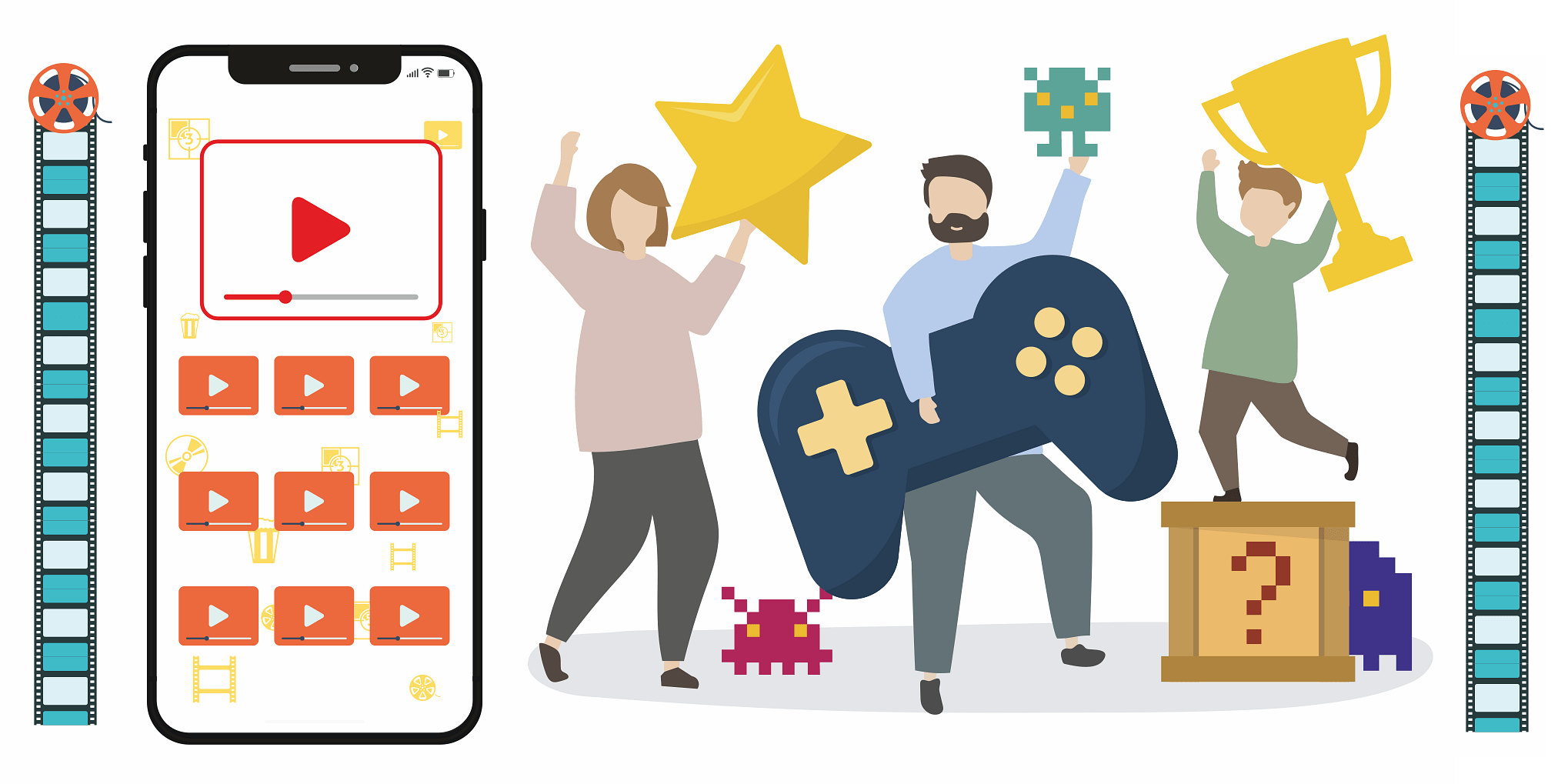Apps draw more users because of the unique and fun features that come with them. Apps make phones “cool,” and their advantages have significantly impacted how we work today. Expert programmers are getting to work on their applications, design and develop them from scratch, and incorporate valuable features.
Because of the prevalence of smartphones, mobile application creation is becoming more popular among business owners. But what is a mobile application? What advantages does it provide to businesses? This article will walk you through the steps of developing a mobile app.
Table of Contents
What Is A Mobile Application?
Mobile application is a form of a computer program that is being and will continue to run on mobile phones or similar type devices such as tablets. Regardless of compact software units with limited functionality, these apps manage to render users with exceptional services and excellent experiences. In comparison, mobile applications are different from desktop applications that rely on integrated systems of software.

Instead, a mobile app has a prominent, distinctive, and restricted set of attributes or features differing from each mobile app development company. It could be anything related to entertainment like any game, an android web browser, or something else entirely. Early mobile apps used to hold out and combat against multi-functionality owing to their limited hardware resources.
Even though today’s smartphones are considerably a lot more advanced, mobile apps remain limited in their functionality. Looking at it that way, the android app developers in USA, India, and other countries let the users select the features they require on their devices.
Key Mobile App Development Technologies
It is essential to understand all of the various technical considerations that top mobile app development companies in USA, India, etc, before developing an app.
1. Native Applications
Apple’s iOS and Google’s Android are the two most common mobile operating systems. Native apps are written in the same code that was used to create the computer and its operating system. A native app can be downloaded and installed directly on a device, and its data is either stored in the device or cloud storage.
Native apps interact with the device’s operating system to equip them to run faster and flexibly than other apps. Developers build different application versions for each platform. Thanks to their ability to tap into unique resources, native apps can easily access multiple services on smartphones, such as a camera, calculators, etc.
The user interface of a native app helps users to navigate across the app more easily. It is well integrated with the device’s hardware. One significant drawback of creating this app is that most developers specialize in one platform (Android or iOS), so designing the app for both platforms would necessitate two different developers (or teams), which will require more time and expense.
That is why developers give equal importance to progressive web app development, which does not need two different developments (Android and iOS) and still provides a native app-like user experience.
2. Web-based Applications
Web-based applications are basically software programs that function on mobile devices and act almost similar to native applications. Native apps and web based apps, on the other side, have major disparities. For instance, a web based app runs and functions on browsers and is ordinarily written in CSS, JavaScript, or other scripting languages.
The user gets the direction to the URL and then is given the option to install the application. On their website, by bookmarking it, users can save it for later. Ergo, they only use a small amount of device memory. Users should only be able to utilize the program’s features if they have a data connection and all of their personal data would be stored securely on the server.
The major disadvantage of web-based apps is that they need a strong data connection most of the time. Or else, the user might face challenges with a poor user experience.
Furthermore, other than the most regular features like geolocation, whether it be app developers USA or any other country, they don’t have many APIs to work with. The output will be influenced by the browser’s functionality as well as the data connection.
3. Hybrid Applications
Web technologies like JavaScript, etc., are used to design these hybrid applications. Hybrid apps are fundamentally mobile apps wrapped in a native shell. These apps are simple and swift to create, which is the most significant advantage of using these applications. Hybrid applications can run on all the devices irrespective of their platform. This minimizes maintenance value and eases the updating procedure.
Hybrid implementations, on the other side, may be a little slow and relatively ineffective. Many times, since the software may not look the same on two or more devices, you may come across some design issues. To develop a hybrid application, businesses take the help of an experienced mobile application development company.
Types of Mobile Applications
Mobile apps come in a variety of sizes and types. To help you understand the latest developments trends in mobile applications, here are the most common types of mobile apps that developers develop majorly:
1. Gaming Apps
The most common type of mobile apps designed by any mobile app development firm is gaming apps. Majorly, there are so many people who have games installed on their tablets and smartphones. According to a new survey, mobile games account for 33% of all app purchases, 74% of user spending, and 10% of all app use time.

Since this is such a lucrative market, almost all the companies are devoting more time and money to PWA development for developing mobile games and platform-specific versions of well-known mobile games.
2. Business Applications
These business apps now account for a significant portion of the market. People are constantly inclined towards increased usage of their smartphones and tablets to undertake various complex tasks while on the go. These apps will help businesses and enterprises book online tickets, send emails and texts, and keep track of their work progress.

For example, business applications are designed to increase efficiency and cut costs by allowing users to complete a broad range of tasks, from ordering new office printer cartridges to hiring a new office manager.
3. Educational Apps or Learning Applications
Mobile apps that help users learn new skills and expertise are very common nowadays. The demand for these educational apps has been increased amid Covid-19. With these language or skill learning apps, it has become highly manageable because they provide users with the versatility they need in learning.
Currently, apps developed by a custom mobile app development company for education benefits have become a fantastic tool for students, as well as teachers. Teachers use many common educational apps to coordinate their teaching processes better or to further their own education.
4. Lifestyle Apps
This category of apps is primarily concerned with different aspects of one’s lifestyle. Shopping, fashion, virtual dressing rooms, exercise, dating, and diet applications are included in this broad category of lifestyle apps.
Due to changing lifestyle trends, more people are becoming inclined to make their health good with the help of these lifestyle apps. Thus, these applications are always high in demand.
5. M-Commerce apps
M-commerce apps basically provide an ideal shopping experience to a user. It makes sure that it offers the same experience to its users as its desktop users. These mobile commerce apps provide consumers with easy access to goods, making purchasing a better experience and seamless payment methods.

Users can shop here without any security issues. The most common examples are Myntra, Amazon, Starbucks, etc.
6. Entertainment apps
Entertainment apps enable users to stream video content, search for events, chat, or watch content online. Facebook and Instagram, for example, are excellent examples of social media applications. In an online survey, it has been noticed that more than 60% of users spend their time on entertainment applications. Furthermore, video streaming apps have grown in popularity among users all over the world. Businesses hire dedicated developers for their entertainment application development.

7. Utility apps
Trackers, scanners, healthcare apps are among the most common utility apps. These mobile apps are so popular that we don’t even notice that we’re using them as they are quick to respond and easy to use. In reality, utility apps have the lowest user session times because users use them to get things done quickly and then move on.
8. Travel apps
The main goal of travel applications is to make it easier for users to travel. The majority of visitors are tech-savvy travelers who know how to make the most of technology. These travel apps transform a mobile device into a travel diary and guide, allowing users to learn everything they need to know about the destination.
Mobile App Statistics
To claim that cell phones have become an extension of ourselves is an understatement. And, without a doubt, android devices have become an integral part of our lives.
Every day, most of us use several applications for numerous purposes. It may be to stay in touch with friends and family, for jobs, to pay bills, or even for fun. Below is the data based on the statics of mobile application usages:
It’s hardly surprising that the mobile app industry and its custom mobile app development company services are booming, with above and about 3.8 billion smartphone users across the board.

Usage of mobile apps continues to rise steadily, with no indications of slowing down in the near future. There are currently 1.28 billion tablet users worldwide, which has increased by 36% in the last six years.
The number of mobile users has been increased to the extent that If you look up from your phone for a second during the day, We are sure you’ll find that someone else is staring at a mobile screen as well.
- According to surveys, the average American checks his or her phone every 12 minutes. One in every four minutes, 10% of people check their phones.
- Adult mobile phone users use the internet for about 4 hours a day, with 88% of the time spent on mobile applications instead of a browser. This emphasizes the value of businesses developing custom, responsive applications and optimizing their websites for mobiles.
- Millennials or younger generations have more than 67% of apps installed on their phones, but the most common app is still almost just 25%.
- The number of apps installed declines as the age group increases
- The use of older demographics has been steadily decreasing, with those aged 65 and up spending 51.4 hours a month on apps, or around 1 hour and 43 minutes a day.
- Throughout 2020, it is anticipated that the global number of smartphone users will reach 3.5 billion. There are more connected mobile devices (7.94 billion) than there are people on the planet in terms of androids and iPhones.
- In advanced economies, where the median penetration rate is 76 percent of adults, these devices are approaching ubiquity.
- A staggering approx 95% of adults in South Korea own a mobile phone.
- Emerging economies are catching up to developed economies. Brazil and South Africa have already reached 60% penetration, while India’s figure of 24% still reflects hundreds of millions of users.
- At work, at home, on the street, when dining, in bed, and even in our cars, we use our phones. You may be reading this on a mobile device right now. But, what are all of these people doing on their phones? Apps account for 88 percent of all mobile time.
One of the things you should consider when developing a mobile app is your monetization plan. Isn’t that why you’re making an app in the first place? Due to have the financial gain. Owing to the fact that certain applications are rarely used. However, companies must concentrate on the purpose they aren’t being used.
Excessive ads, alerts, not enough room, etc., on their phone are among the other top reasons for uninstalling, so companies that provide android app development services should take care of these concerns.
All of these responses point to one thing, that is a bad user experience. The user experience is everything, and a bad UX will guarantee the app’s failure.
It’s possible that you’ve considered charging for software downloads. But, if you charge for your app, can people use it?
- Free apps generate 98% of all app sales worldwide. Just a tiny percentage of the population can afford to pay for downloads.
- Nearly three-quarters of respondents said they have at least 11 applications on their mobile, according to a survey conducted near the end of 2019.
- So, while new apps aren’t downloaded all that often, the average user has a sizable number of apps competing for their attention. However, downloads could be a poor measure of progress. If a user does not open and uses the app regularly, it is simply gathering dust and is at risk of being removed.
- The number of mobile apps installed each year will hit 258 million by 2022. This is a significant rise from 2017 when the figure was 168 million.
- By the same year, global app store market spending would have increased by 92 percent to a whopping $157 billion.
What is Mobile App development?
Among all other steps differing based on the project being made, there are six principle steps in an app’san app’s design and development process.
The steps are essential to be followed by a mobile application development company during the development phase.
It will help you develop a bug-free, fully functional application, which will, in turn, help you grow your app efficiently and effectively.
- Questioning your ideas: When coming up with app theories, it is vital to do some homework. Asking a few questions about the need for this app, who the users are, why it should be given priority over other similar apps (if there are any), etc. This will help you provide better exposure to the clients.
- Design: During this development phase, UI/UX design for the application is to be created. It should be simple to understand, engaging, and well attractive. It is the step with which we finalize how the app will look.
- Development: At this phase, after the design is finalized, development is started. It includes the coding part. Backend development, API development, and integration, etc., are all done during this phase. Developers refine their codes and begin the initial testing process.
- Testing: In this step, the application is evaluated for any errors by a mobile app development company. Developers and testers will gauge its accuracy, flaws, and areas that need improvement.
- Deployment/Launching: During this phase, the application is ready to be deployed. The app is submitted to be published on Apple App Store or Google Play store.
- Marketing: A most important step during application development is marketing. Develop a strategic market campaign to encourage people to download your app and provide suggestions about increasing user engagement.
How To Build A Mobile App
If you want to create a mobile application, you essentially have three options:
- Create an in-house development team.
- Engage in the services of a specialized software development firm
- Make use of freelancers’ skills.
Here’s a quick rundown of each of the choices, along with their benefits and drawbacks, to assist you in making the finest choice for your android development project.
1. Putting Together An In-House Squad
If you plan to form an in-house development team for your mobile app development, you will have complete control over the development path your app takes.
However, It will come at a high price. You’ll have to cover the developers’ wages and a variety of other expenses, including office space, benefits, and incentives, hardware, software licenses, e.t.c. That is particularly difficult if you live in an area where recruiting mobile developers is expensive. If you choose this option, your app will have a very high value. The risk of your project will rise since you will be responsible for the work of your team.
2. Using The Services Of A Software Development Firm
Today, there are a plethora of software development firms that excel in mobile development. By partnering with such firms or any IT development company, you will be entrusting the development of your app to a team of experts who can help you with everything, such as
- UX/UI design
- Product innovation
- Evaluation of the app
- Regulatory compliance,
- Assurance of quality, and
- Application development.
The chief advantage of this choice is that you will benefit from the team’s experience and knowledge from completing projects identical to yours. You can verify their qualifications and expertise by taking a look at their resume, developed projects, and client base. This approach provides an outstanding value with quality alignment.
3. Getting a freelancer to work for you
It has the minimum value of all three options. You can simplify the creation process if you hire dedicated developers or a single freelancer to design your mobile app. Since very few or only one person will be responsible for creating your app, communication will be more uncomplicated, and teamwork will not be a problem.
Finding a dependable and reputable freelancer, on the other hand, is difficult. The success of your project would be dependent on the abilities and experience of a single individual. Even if you recruit a skilled mobile app developer, it is a challenging task to find one who is expert with frontend development as well as with backend development.
In this case, your product will suffer with functional issues or with an unappealing user interface. Hiring a freelancer is a cost-effective choice, but it comes with a slew of risks that could jeopardize the entire development process of your app.
Conclusion
Finally, have a transparent feedback channel and be open to your users’ suggestions and problems; after all, the client base and usages by the consumers will help the progress and further development of an app.
Keep a regular check on the feedbacks of your customers. Give heed to your analytics and market research, and monitor the chief performance metrics (also known as KPIs) that determine your marketing goals’ progress along with the success of your app. We will see many more revolutionary mobile apps reaping the benefits of cutting-edge technology in the coming years.
“Industries will spend more assets to mobile applications as digital phones continue to outnumber desktop devices in terms of consumer numbers and interaction between user and mobile apps.”
























